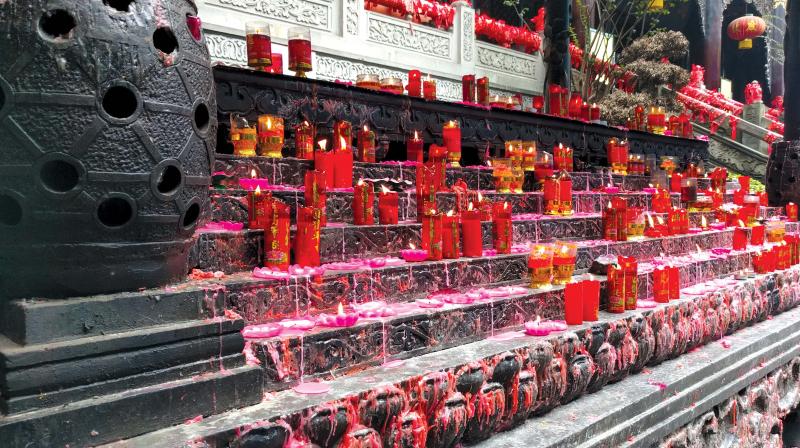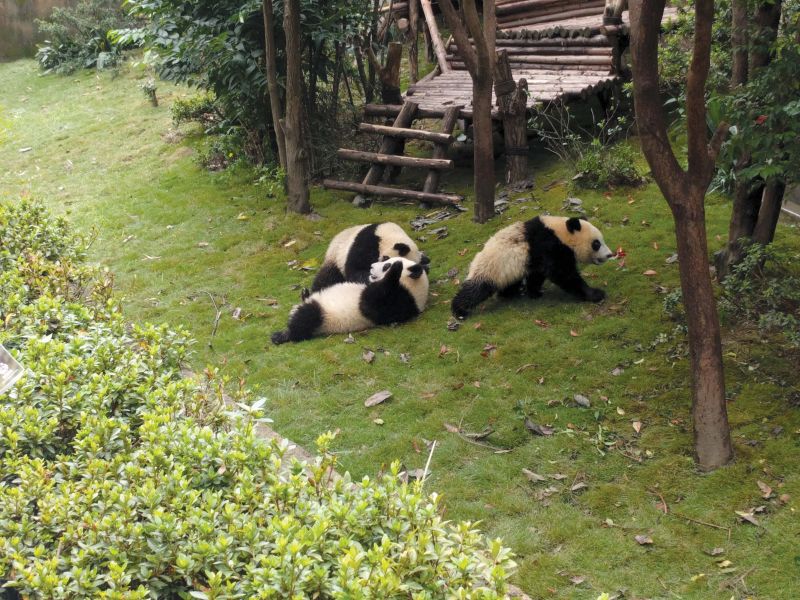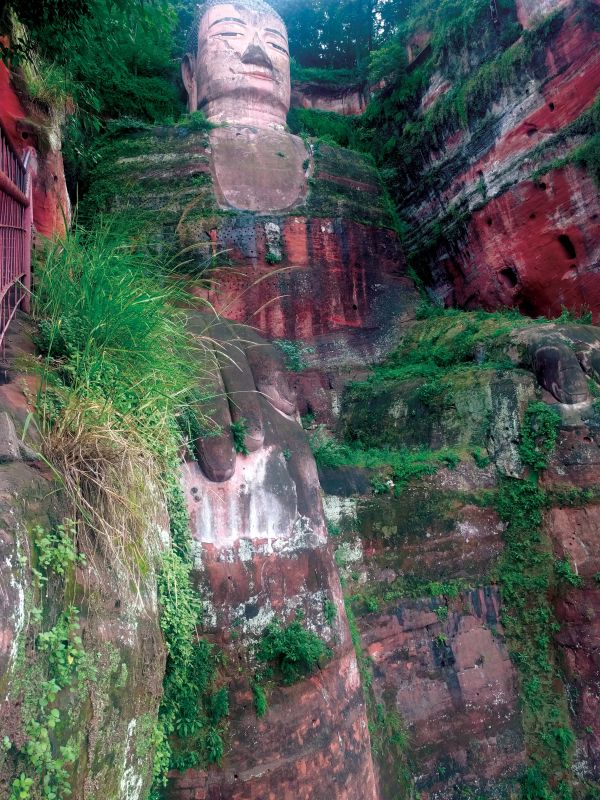NIHAO' to train that dragon
This itinerant backpacking couple took the road less travelled, and were left amazed at hinterland China.

What does a true traveller really ache for? Adventure, right? That was what prompted us to explore the verdant hinterland of this historically-rich country. We chose the land of the Crouching Tiger, Hidden Dragon (a Chinese idiom for the unknown lurking in the dark) — China. Deciding to go the backpack route through a few landmarks across China, the days leading to our adventure were replete with learning. One thing was sure, we wanted a different kind of trip so we delved into the mysterious, exotic China which had always intrigued us as one of the world’s oldest civilisation. Backpacking our way through the key cities, according to the seasoned backpacker amongst us (Indraneel), it teaches one so much. It was amazing how the way you travel changes perspective, letting go of the “I can’t” mental block. But when our minds took over, the body was happy to follow! We did miss a couple of trains but the best part in China is that if you immediately book the next available train, the rescheduling is free! We stayed away from modern day creations, and scoured places steeped in Chinese culture and history. And our stay was at hostels where you can find many fellow backpackers sharing valuable tips and interesting anecdotes. The hostels were clean with WiFi and English speaking personnel as it can be tough otherwise. In Chongqing, we explored an AirBnB — an apartment on the 26th floor with amazing views of the city skyline!
 The Pandas going about their business.
The Pandas going about their business.
Chengdu
Our first destination on our backpacking trail was Chengdu, the capital of Sichuan Province, famous for the Chengdu Research Base of Giant Panda Breeding. Reaching the base just before noon, we were initially disappointed to see pretty much all the Giant Pandas in deep slumber. Luckily, they started waking up and showing signs of activity as lunch time approached. You can spend hours watching those clumsy and adorable Giant Pandas waddling around, playfully fighting with each other and munching on bamboo shoots. We were amazed to hear about the effort and research to encourage the Giant Pandas to procreate and the newborn infant pandas were a sight to go completely awww. Our next stop was Wenshu Monastery. The Tang Dynasty Temple is dedicated to Wenshu or the Manjushree Bodhisattva in Mahayana Buddhism. The monastery houses a vegetarian restaurant (yes!) and a courtyard Tea House. Not ones to miss a chance to refill on food and drink, we had one of the most sumptuous vegetarian buffets, and spent the rest of the afternoon at the Teahouse sipping and deep in thought over a pot of Longjing Tea. In the evening, we watched the famous Sichuan Opera at the Shufeng Yayun Teahouse — it was a vision of acrobatics, mimicry, shadow puppets, fire breathing and face changing acts as the grand finale, as we sipped flavourful tea and munched on crisp sunflower seeds.
Next was the world’s largest and tallest Buddha statue, Leshan Dafo (Grand Buddha). Situated in the city of Le Shan, the 1,200-year-old statue’s stupendous size sinks in when you walk down from the top, and reach the foot of the Buddha. The size humbles you, and its veneration is most aptly captured in Leshan local speak, “The Mountain is a Buddha, and the Buddha is a Mountain.”
 The towering Leshan Giant Buddha.
The towering Leshan Giant Buddha.
Chongqing and 3 Gorges Yangtse River Cruise
Chongqing, the namesake city of Wong Kar-wai’s famous movie is China’s most populous municipality, and also the starting point of the 3 Gorges Yangtze River Cruise. Before the cruise, we spent a day in Chongqing visiting the Luohan Temple and savouring the spicy Chongqing HotPot. For the cruise, we chose a Chinese Tourist Boat instead of the luxury cruises, to keep our budget from exploding, while also getting a chance to mingle with the friendly locals. It was fun to be on a boat with 150 natives as the only foreigners! The three night-two day cruise took us down the Yangtze River with breathtaking views of the majestic 3 Gorges keeping us company all day long —Qutang, Wu and Xiling Gorges — the river having cut deep into hill formations over thousands of years. The boat also stopped at the beautifully lit Zhang Fei Temple around midnight – which was a first for us – visiting a temple at midnight. The cruise ended at Yichang with a tour of the 3 Gorges Dam, the world’s longest dam. It’s magnificent, to say the least.
 Kunming Lake Summer Palace in Beijing.
Kunming Lake Summer Palace in Beijing.
Xian
Xian hosts the world famous Army of Terracotta Warriors, an emperor’s futile attempt to continue his rule in the afterlife, and a reminder of a man’s vanity and desire for immortality. The well-preserved site is a rich source of information about the life and times of ancient China. The largest of the pits has more than 2,000 terracotta soldiers on display and excavations are still on-going. Even though the Terracotta Warriors is probably the most famous Chinese monument after the Great Wall, we came away thinking that the place had more of an archeological significance than something wondrous which took your breath away. We ended the day with a long de-stressing walk on the Xian City Walls, China’s best preserved City Walls.
Longmen Grottoes (near Luoyang)
Our search for the wondrous hit bull’s eye at the Longmen Grottoes (also called Longmen Shiku). A victim of the Cultural Revolution, the ravaged yet beautiful Grottoes are one of the finest examples of Buddhist Rock Reliefs in China. Built around 500 AD, these carvings teach us why it’s important to preserve our cultural heritage before it’s too late. The site is located along the Yi River and one can start admiring the carvings on the West side, cross the river and see the carvings on the East side. Most majestic are the views of the West side Leshan Buddha from the East.
Beijing
The last stop on our itinerary, Beijing, offered us rest and replenishment after days of backpacking and constant travelling. We spent three days in Beijing ticking off important sites — Forbidden City, Mao Memorial and Jinshan Park are around Tiananmen Square and we could thankfully cover all in a day. For the Great Wall, we decided to stay off the touristy sections, and chose the HuangHua Cheng section of the Wall which is around two hours from Beijing. Climbing this section of the wall is illegal, but our backpacking spirit egged us on. Through the entire hike, we met only one other couple — solitude can be a luxury in China quite like India, unless you are trekking on an offbeat trail! The trail is breathtaking, the scenery fantastic, and the hike very steep.
Our flight back to India was from Beijing and we returned home with a better understanding of a great ancient culture and the changing face of modern China.
Newbie backpackers’ ready reckoner
Greet people with a sweet, Nihao!
You might not find many who understand or speak English.
You will miss trains, probably hop on the wrong metro, but consider this a learning experience.
Always carry a metro map in whichever city you plan to go, the metros are well connected.
Travel with comfy shoes, an umbrella, insect repellent, snacks as the walks can be really long and a Chinese phrase book.
A china chomp
Baozi (or Bao) is a steamed bun with variations commonly eaten for breakfast with fillings of meats, bean paste, lotus seed paste, sesame paste, etc.
Chongqing HotPot is China’s most spicy dish, a speciality of Chongqing, best enjoyed as a boisterous dining together.
For the vegetarians: Creative Mockmeat (from Soya) is popular.
Peking Roast Duck is a speciality since the Imperial era. Street Food is not for the faint hearted, and markets like Wangfujing Dajie offer Shaokao (scorpion spicy meat skewers), sea horse, starfish, turtles, snakes, edible bugs and lizards.

